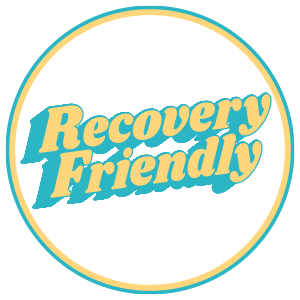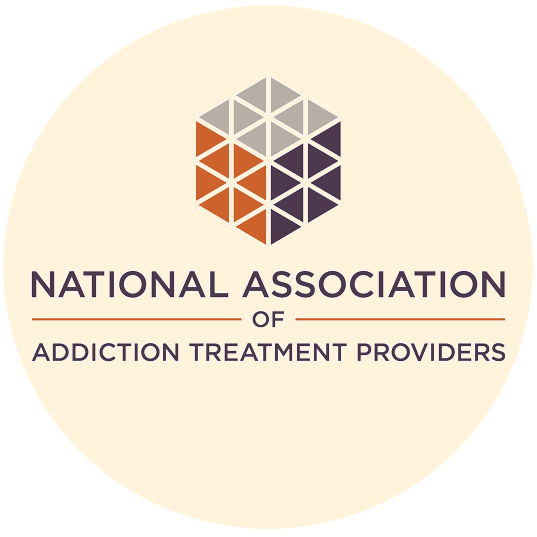Intensive Outpatient Programs (IOPs) treat addiction while offering home-life flexibility and freedom.
However, IOPs are not for everyone. Nor are they all created equal.
Anyone considering these one of these programs should understand both their limitations and the commitment required. At NSR of Asheville, we receive lots of questions about our .
In this Guide to Intensive Outpatient Programs for Addiction Treatment, we’ll try to answer all of your IOP FAQs.
You’ll learn the answers to:
- How do intensive outpatient programs work?
- What is the difference between inpatient and outpatient?
- What services are offered in IOPs for addiction?
- Where do IOPs fit in the continuum of addiction care?
- Is outpatient treatment the right choice for me?
- How should I choose an intensive outpatient program?
- Should I choose out-of-state IOP treatment?
What is an Intensive Outpatient Program?
Intensive Outpatient Programs provide part-time addiction recovery treatment. Also known as IOP or IOT, they provide post-detox therapy to guide clients through early recovery into sustainable sobriety. IOP treatments build life skills via onsite sessions. Unlike residential programs, however, clients live offsite. The best IOP services are therapeutic-based treatment plans. Clients use part-time programs when residential inpatient treatment is not required or possible. They are a powerful tool for many, including those in early recovery. Others use IOP as their primary intervention to gauge their recovery needs. Intensive outpatient programs offer recovering addicts the flexibility they need to maintain their lives and get the help they need simultaneously. IOPs are designed for people who apply to any of the following:- In emotional crisis that disrupts daily life at home, work, and/or socially.
- Need extra support in early addiction recovery stages.
- Must continue to work, attend school, or care for family.
- Not in need of inpatient services, like medical detox, and 24-hr safety watch.
- Willing and able to attend and engage with all phases of program.
Difference between Inpatient and Outpatient Treatment
The term “intensive outpatient” is easy to confuse with the term “inpatient.” Understanding the difference is important if you want to find the best treatment plan for you. Inpatient clients live strictly onsite at a Residential Treatment Center (RTC) during treatment. These services restrict clients in order to restore basic stability. These programs isolate them from triggers, provide medical detox, and actively prevent suicidal or homicidal behaviors. Outpatient clients may live at home or in transitional housing. They attend treatment sessions onsite during a scheduled time block. Outpatient services are more flexible for clients to maintain their essential duties like work and family care. Inpatient may be right if the client needs…- 24-hour monitoring for medical illness and/or substance detox.
- Distance from triggers.
- Protection for safety of themselves and others.
- To remain in their job, family, or life duties as they recover.
- Access to emotional support via therapy and peers.
- Strict systems to prevent relapse, like substance use check-ins.
- Lower cost of care.
IOP Explained
Since clients enter an IOP for flexibility, let’s discuss how IOP fits into their daily life. Intensive outpatient programs for addiction support are part-time treatment. However, they are still “intensive,” meaning clients must stick to a fairly strict structure. As always, accountability is an important part of any legitimate addiction treatment program. After intake, screening, and assessment, clients are given a custom treatment plan. Attendance and full engagement is required of clients for all IOP sessions. IOP sessions are located onsite at a medical or therapy facility. Schedules usually run in 3-4 hour daily blocks for 3-5 days a week. Some IOPs offer day or night sessions. Treatment intensity may rise and fall along the course of an IOP. Clients commit more time at the start and step down as they progress. But, relapse and other challenges may require a client to step back up into higher intensity treatment. Full length of treatment is recommended at a 90-day minimum. Some programs may also offer 30-day and 60-day programs depending on the needs of the client. Because recovery is a lifelong battle, it’s not uncommon to revisit IOP after years away.Summary of IOP Services
Each treatment plan will include services selected for the client’s specific needs. Primary Services of IOP usually offered according to SAMHSA:- Counseling therapy sessions (group, individual, family)
- Peer support group sessions (12 steps program, etc.)
- Substance intake monitoring (alcohol, drugs)
- Life skills training
- Case management
- Medication management
- Access to medical and mental health services
- Access to 24 hr crisis management hotline
- Ambulatory detox
- Complementary therapies (art, music, adventure, equine therapy)
- Nutrition advisory services
- Physical fitness services
- Childcare programs
- Vocational education
Group-based Counseling Therapy
Group therapy is the main social component to an IOP’s therapeutic treatment. The goal is to foster healthy socialization and build communication skills in clients. Clients meet in a therapist-guided peer session to discuss their addictions and coping skills. In group, clients learn to deconstruct old behaviors together with their peers. As they reform with their peers, they integrate new life skills to support their goal of sobriety. Group sizes are usually intimate at around 8-15 members. You may find even smaller groups in private IOPs, designed to give a more individual focus. Clients may engage in some of these types of group therapy:- Skills development trains clients in life skills to thrive in sobriety.
- Psychoeducational teaches clients about their disorders and coping methods.
- Refusal training helps clients adopt ways to effectively refuse substances.
- Relapse prevention equips client with skills to rebound in case of relapse.
- Family groups reveal and address any challenges in the client’s family system.
- Demographic specializations may be available for specific needs. These may include gender, LGBTQ, veterans, and sex abuse survivors.
Individual Counseling Therapy
Individual therapy is the personal component of IOP addiction treatment. In these sessions, clients privately discuss anything not shared in group sessions. Individual counseling may expand points of concern revealed in group therapy. They also dive deeper into the more intimate needs of the client. Individual sessions are the more traditional approach to therapeutic intervention. With one-on-one meetings, a counselor can get a better understanding of a client. Some common individual therapies may be in a client’s treatment plan:- Cognitive-Behavioral Therapy (CBT) helps clients reform thoughts into more effective behaviors.
- Dialectical-Behavioral Therapy (DBT) helps clients develop emotional resilience and other life skills.
- Dual Diagnosis helps clients with simultaneous mental health and substance abuse disorders.
Peer Support Groups
Support groups offer continuing care via community in and beyond IOP treatment. Groups like 12 Steps are community-based to support members into post-treatment. Clients find a sense of fellowship to keep them sober beyond treatment. These groups reinforce therapy and provide ongoing accountability. Peer support groups are optional in IOP treatment, but are strongly recommended. Community-based groups help to support clients beyond the course of IOP therapy. Clients dedicate part of their non-therapy time to engage in support groups. 12 step programs are the most common support group structure. However, they come in many variations to address different disorders. Here are some of the more common 12 Step groups:- Alcoholics Anonymous
- Narcotics Anonymous
- Al-Anon or Alateen
- Sex Addicts Anonymous
- Food Addicts Anonymous
- Overeaters Anonymous
- Nicotine Anonymous
Complementary Therapies
Complementary therapy gives a philosophical component to IOP treatment. Clients confront their emotions through physical, creative, and social activities. New forms of expression give clients insight into themselves and the world. These outlets can also replace clients’ former substance-related activities. Complementary therapies are a companion to the lessons gained in IOP therapy. Clients may partake in complementary therapy sessions as a group or individually. Activities reveal clients’ emotional challenges without directly speaking about them. Examples include:- Art therapy helps clients use techniques like painting, sculpting, and drawing.
- Music therapy has clients of all skill levels create and listen to music.
- Adventure therapy uses various outdoor activities like kayaking and camping.
- Equine-assisted therapy clients interact with or care for horses.
Where IOP Falls in the Continuum of Addiction Care
The duration of an IOP may only run for a short time, but recovery is lifelong. A continuum of care threads clients through full recovery, from intake to sobriety. Continuum of addiction care helps clients get treatment at every stage of recovery. As they pass through each “level”, facilities collaborate to bridge the gaps in care. The continuum of care has five levels defined by the American Society of Addiction Medicine:- Level 0.5: early intervention services
- Level 1: outpatient services
- Level 2: intensive outpatient or partial hospitalization services
- Level 3: residential or inpatient treatment services
- Level 4: medically managed intensive inpatient treatment services
How to Choose an IOP Program
Every IOP offers different services, so clients should be served based on their needs. Here are a few things one should look for:- Custom treatment plans are essential to treat a client’s specific challenges.
- Avoid long waitlists to deter any life-threatening delays of treatment.
- Medical treatment may be important if detox is needed at any point.
- Insurance coverage may make an IOP more affordable under some providers.
- Clinical certifications ensure you receive care from a legitimate therapist.
- Night or day schedule options should fit the client’s existing commitments.
- Location must be nearby. Distance can inhibit clients attendance in sessions.
Benefits of Out-of-State IOP Care
Out-of-State IOP treatment can distance clients from their addiction triggers. OoS IOPs blend outpatient benefits and the absence of triggers for inpatient care. The unique benefits of Out-of-State IOPs include:- Removal from triggers in your daily environment.
- Finding a program with treatment options not available locally.
- Finding a program with peer group sized to your preferences.
Takeaways on Intensive Outpatient Programs
In summary, IOPs are ideal for treating addictions in a structured, part-time plan. By now you’ve learned that:- IOPs for addiction treatment a therapy-based plan to fight substance abuse.
- Outpatient programs are best for those that do not need medical detox.
- IOP services generally focus on various therapies and community support.
- IOPs can be a point-of-entry, step up, or a step down in care for clients.
- Clients should be admitted to an IOP that addresses their specific challenges.







